Abstract
- Assisted reproductive technology (IVF-ET) can help couples to overcome problems of infertility.
- IVF-ET is complex and risky.
- Success is not always guaranteed.
- Theoretical concepts and outcomes may differ.
- There are ethical and legal issues to consider.

Introduction
- In vitro fertilization and embryo transfer (IVF-ET)has existed for over 30 years.
- Many million babies have been conceived through IVF-ET.
- IVF-ET technology procedure is developed to aid conception in couples for whom other fertility therapies have been unsuccessful or are not possible (Georgia Reproductive Specialists, 2007).
- IVF-ET is complex with multiple steps.
- Every procedure is risky.
- Procedures result in the insemination and fertilization of oocytes (eggs) in laboratory.
- Embryos are placed in uterus for implantation.
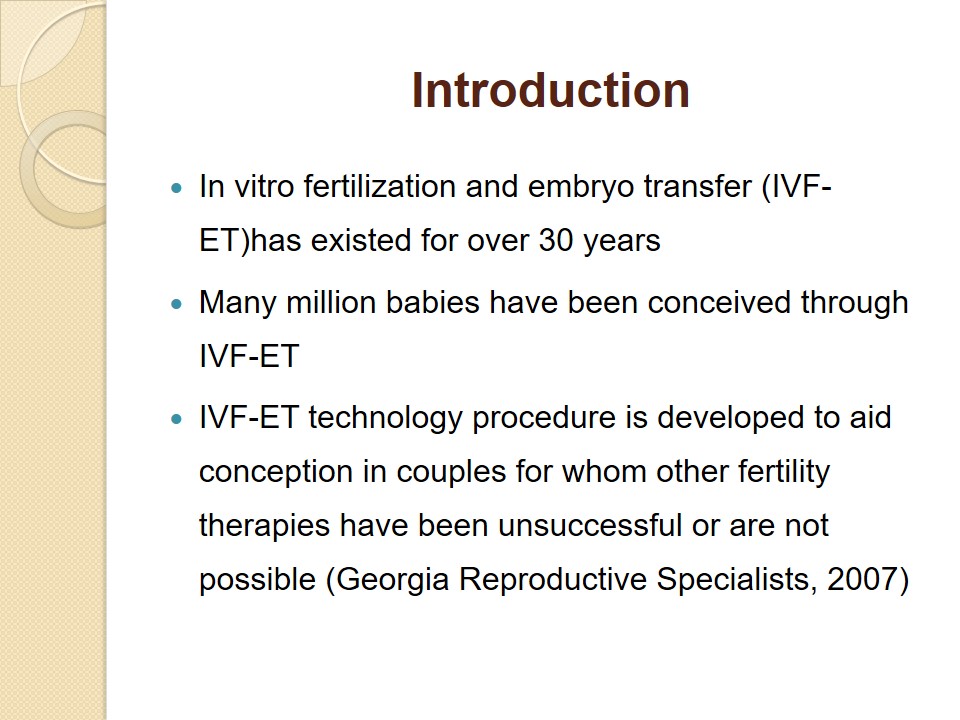
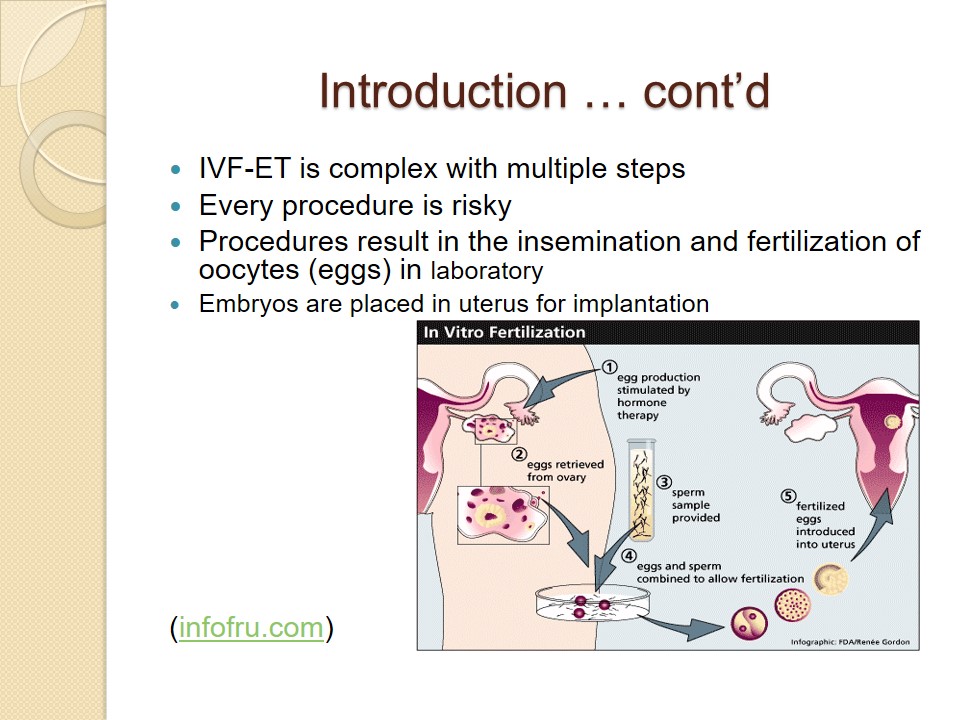
Benefit of IVF-ET
- IVF is an elective medical therapy.
- Couples unable conceive may use IVF-ET to develop pregnancy.
- IVF-ET is a costly therapy.
- IVF-ET needs specialists and elaborate laboratory.
- The risk of congenital baby malformation is yet to be determined.
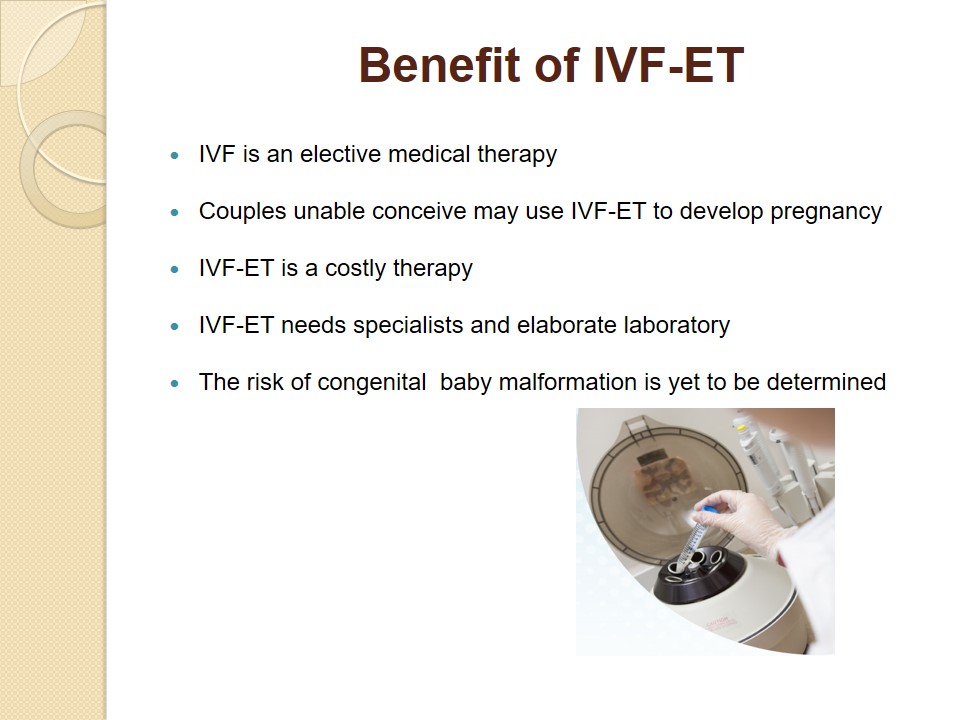
IVF-EF Procedure
- Several hours after insemination, oocytes are examined for pronuclei or potential fertilization.
- Oocytes are further cultured for additional 24 hours.
- Embryo transfer (ET) into the uterine cavity is conducted.
- The women may go home 2 to 3 hours after the procedure (Georgia Reproductive Specialists, 2007).
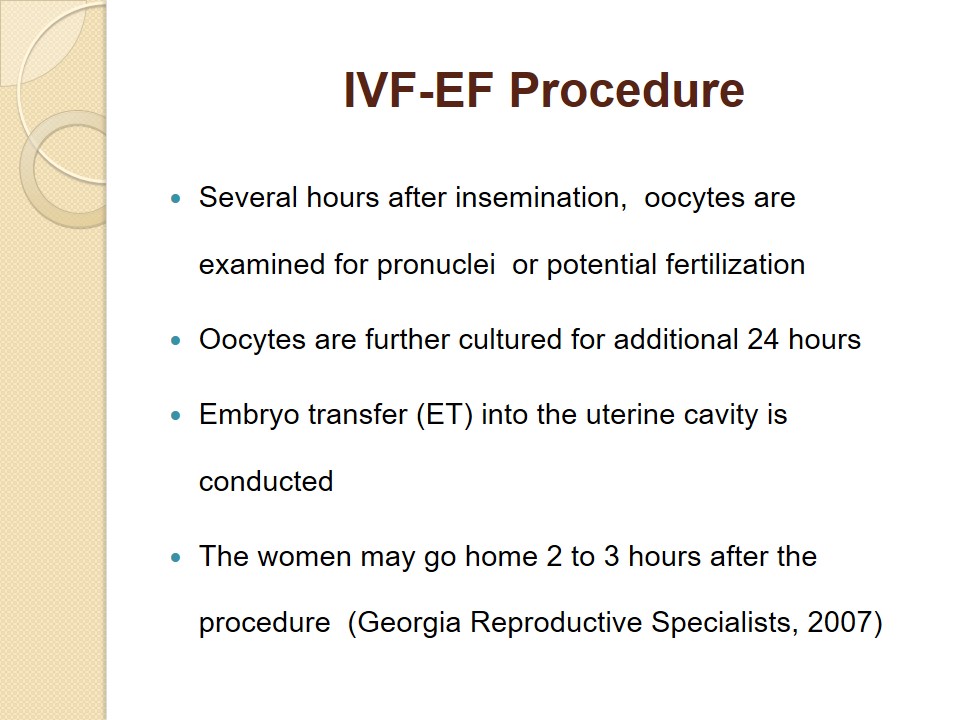
Procedures & Risks of IVF-EF
- Superovulation:
- Stimulates egg development to produce several eggs;
- Multiple eggs enhance chances of embryos (fertilized eggs);
- Medications are required for superovulation;
- Medication is administered via injection.
- Risks include:
- Allergic reactions;
- Hyperstimulation of the ovaries;
- failure of the ovaries to respond;
- Cancellation of the treatment cycle due to some adverse outcomes.
- Ovarian Hyperstimulation Syndrome (OHSS):
- High-level of estrogen;
- Excessive fluid retention in the abdomen or chest cavity;
- Thrombosis of arteries or veins may occur and cause stroke;
- Excessive enlargement of ovaries.
- Constant monitoring is required and blood samples needed:
- Pain;
- Skin infection;
- Scarring at the point of extracting blood.
- Use intravaginal ultrasound to monitor follicular development.
- Retrieving the Oocytes (egg retrieval):
- Procedure conducted under transvaginal ultrasound guidance.
- Risks:
- Negative reactions during drug administration and anesthesia;
- Risks from the inserted needle.
- Collecting and Preparing the Sperm:
- Collected through masturbation;
- It is recommended to abstain for two to five days before specimen collection;
- Men may experience stress and failure to produce specimen sperm.
- Insemination of Eggs and Embryo Culture:
- All eggs should be inseminated to enhance the quantity of embryos for transfer;
- Eggs may not be fertilized;
- Progesterone is administered to the woman after transfer, but has side effects, including:
- Vaginal dryness;
- Bloating, breast tenderness;
- Depression, mood swings;
- Delay of menses;
- Some may cause birth defects (Synthetic progesterone-like medications).
- Transferring Embryos to the Uterus:
- Transfer may take place after three days;
- Healthy embryos should be identified;
- Transfer is done through catheter;
- Transfer procedure should aim for the uterus;
- Use medications to increase success rate (DeCherney, 1986; Farquhar, Rishworth, Brown, Nelen, & Marjoribanks, 2013).
- Embryo transfer risks:
- Mild cramping;
- Loss through displacement to the cervix;
- Tubal / ectopic pregnancy due to displacement;
- Minimal risks of bleeding or infection;
- Miscarriage.
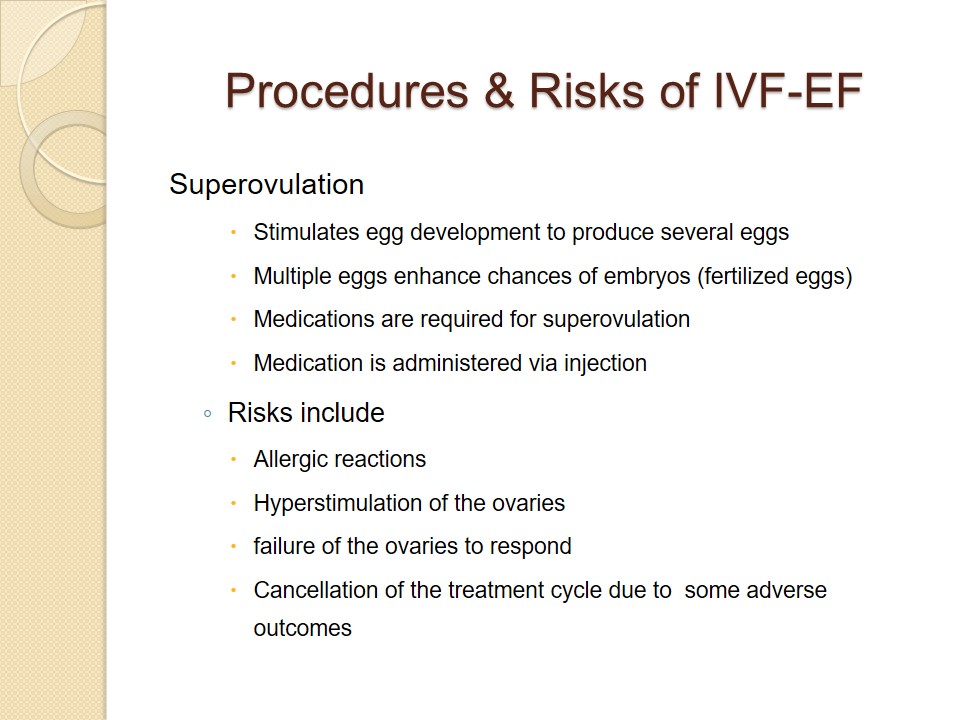
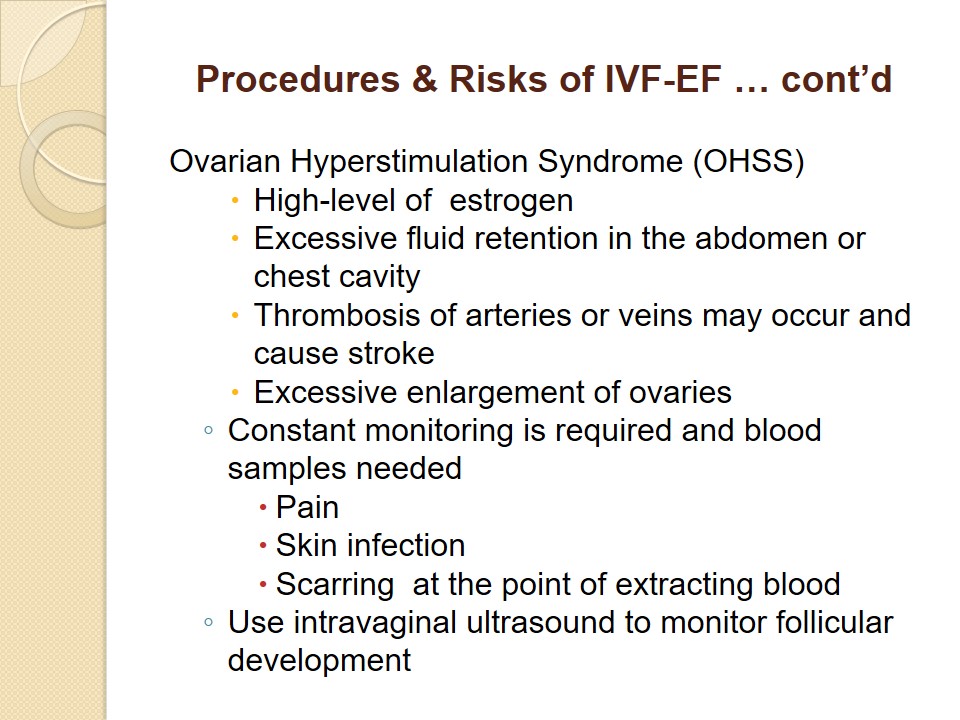
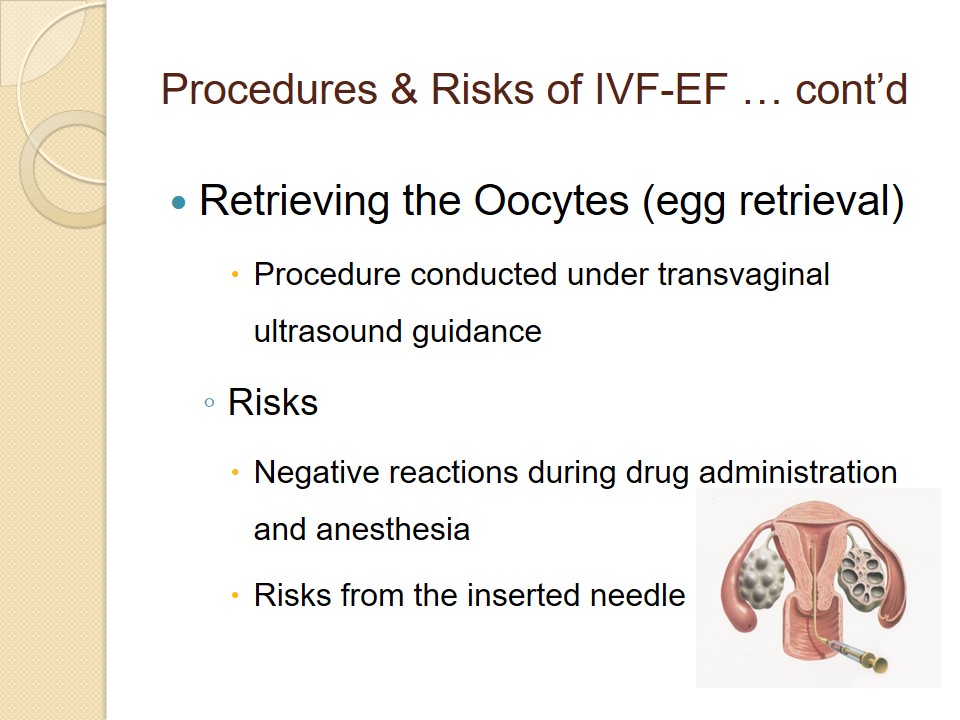
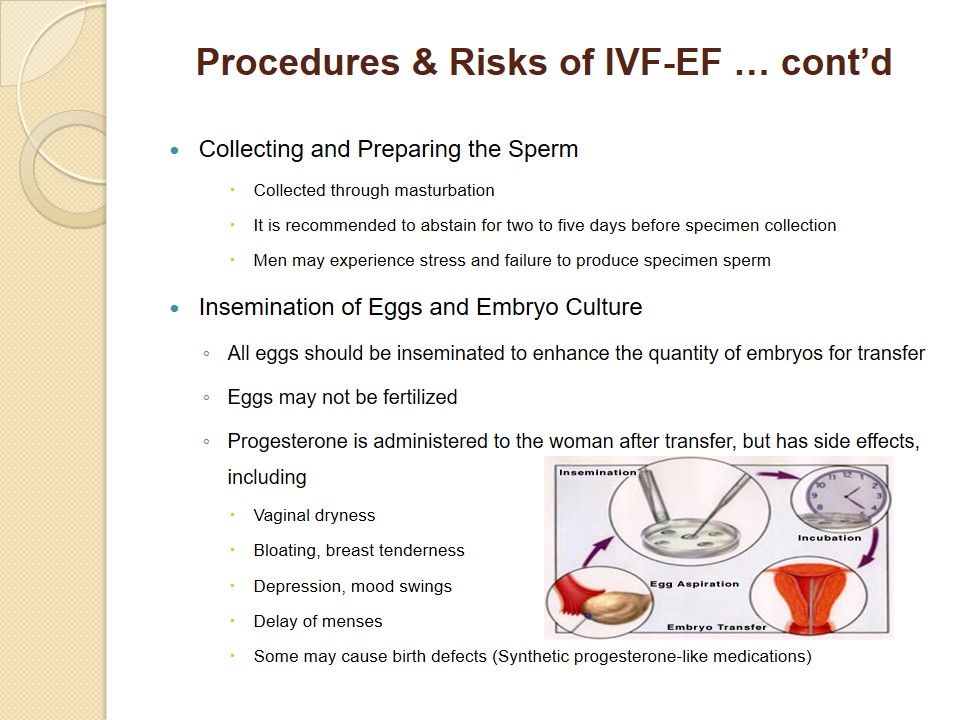
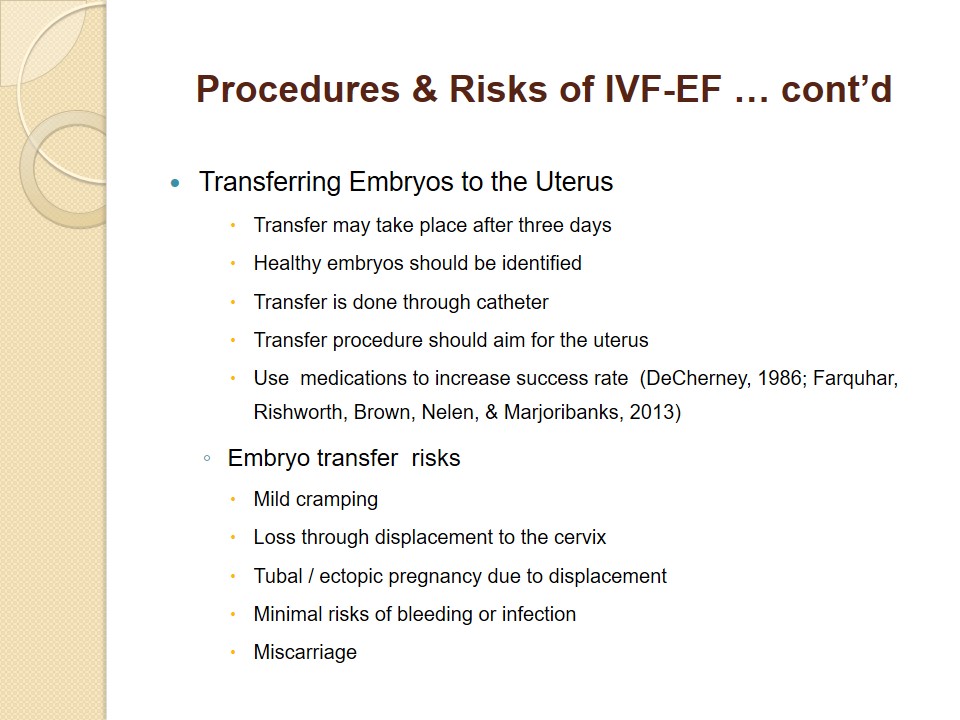
Theoretical Concerns & Possible Outcomes
- IVF-ET procedure does not guarantee conception or a successful outcome of pregnancy.
- The known reasons for pregnancy failure:
- Failure of egg development during treatment cycle, premature ovulation, lost egg, pre-existing pelvic condition or technical difficulties;
- Abnormal eggs;
- Insufficient semen;
- Failed fertilization;
- Failed development of embryos;
- Difficulties with embryo transfer;
- External factors, including lab environments (Kovacs, 1999).
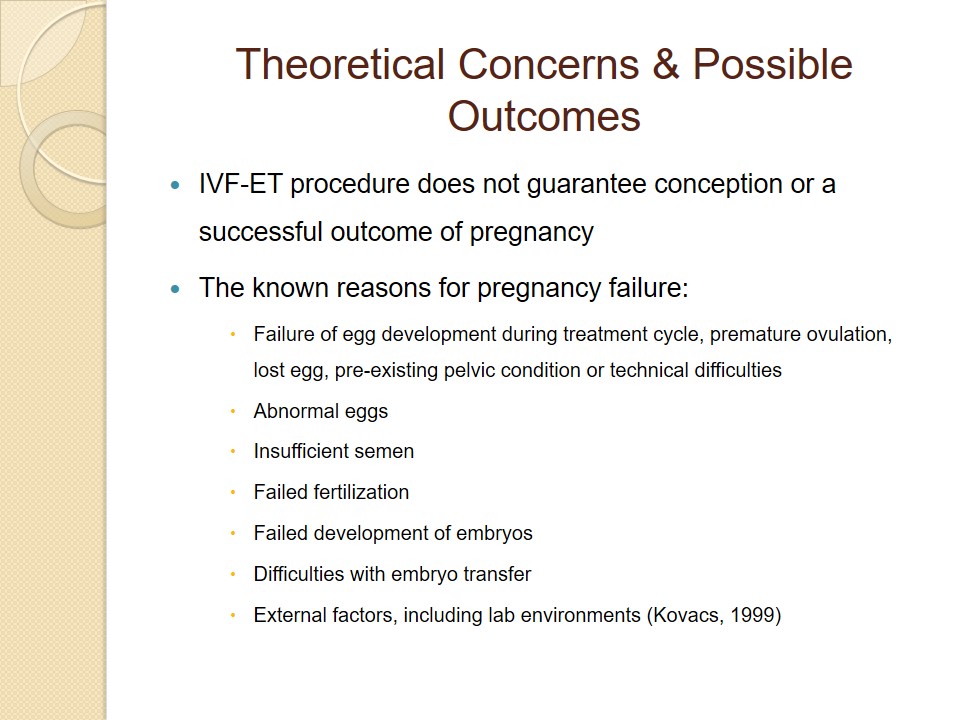
Alternatives to IVF-ET
- Couples are unique and thus causes of infertility.
- Consider the following alternatives, which may work or not:
- Intrauterine insemination (IUI);
- Medicinal therapy.
- Consult with physician before opting for IVF-ET.
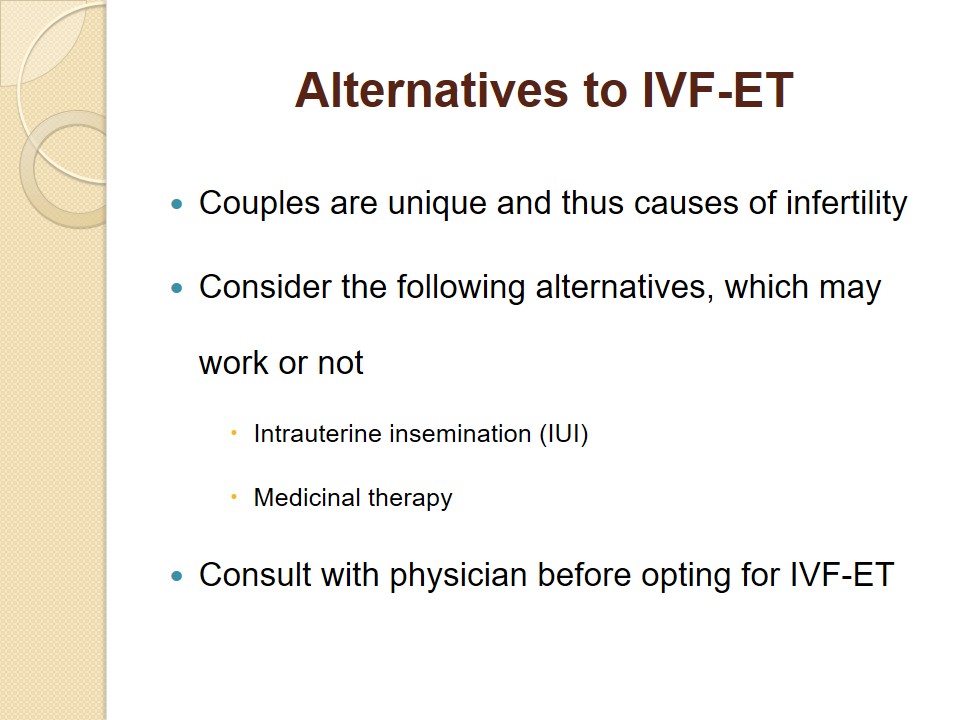
Other Issues with Assisted Reproduction
- Psychological stress.
- Anxiety.
- Disappointment.
- Time and money commitment are required and thus there is need to reduce costs and ensure success (Nargund, 2009).
- Changes in schedule to meet therapy requirements.
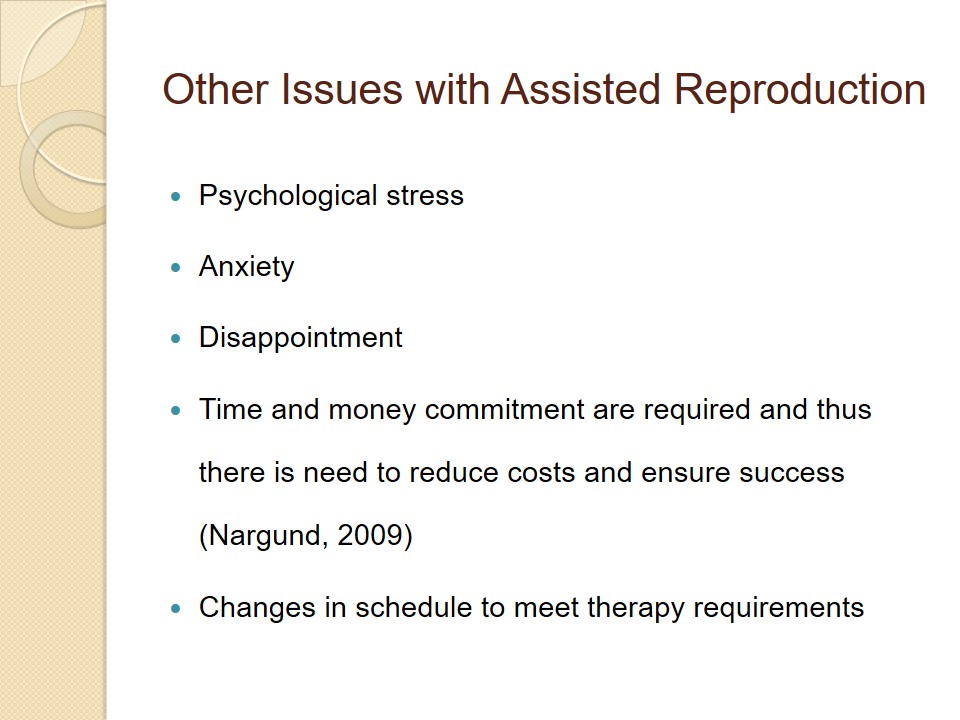
Ethical and Legal Issues
- Written consent form is required from patients.
- Couples must choose how to handle any remaining embryos.
- Potential harm to the embryo (Goldworth, 1999).
- Embryos should be destroyed if the couples are dead.
- Nurses and physicians must observe all legal and ethical concerns (Giddens, 2013).
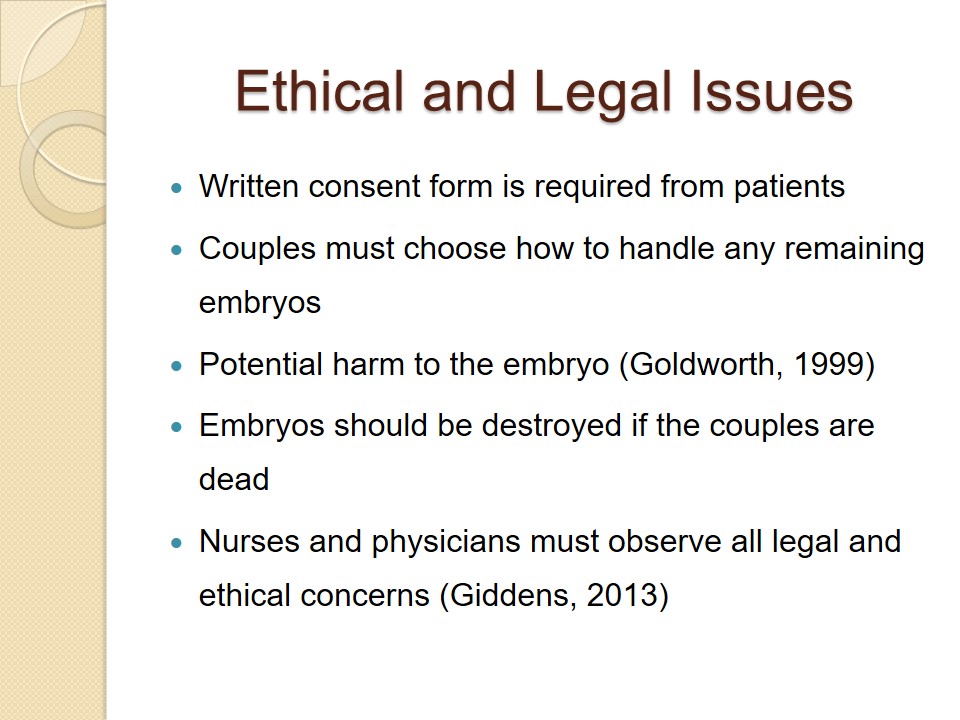
References
DeCherney, A. H. (1986). In vitro fertilization and embryo transfer: a brief overview. Yale Journal of Biology and Medicine, 59(4), 409–414.
Farquhar, C., Rishworth, J. R., Brown, J., Nelen, W. L., & Marjoribanks, J. (2013). Assisted reproductive technology: an overview of Cochrane Reviews. Cochrane Database Syst Review, 8. Web.
Georgia Reproductive Specialists. (2007). IN VITRO Fertilization and Embryo Transfer. Web.
Giddens, J. (2013). Concepts for nursing practice. St. Louis, MO: Mosby.
Goldworth, A. (1999). The Ethics of In Vitro Fertilization. Pediatrics in Review, 20(8), e28 -e31. Web.
Kovacs, G. (1999). What factors are important for successful embryo transfer after in-vitro fertilization? Human Reproduction, 14(3), 590-592. Web.
Nargund, G. (2009). Natural/mild assisted reproductive technologies: Reducing cost and increasing safety. Women’s Health, 5(4), 359–360. Web.